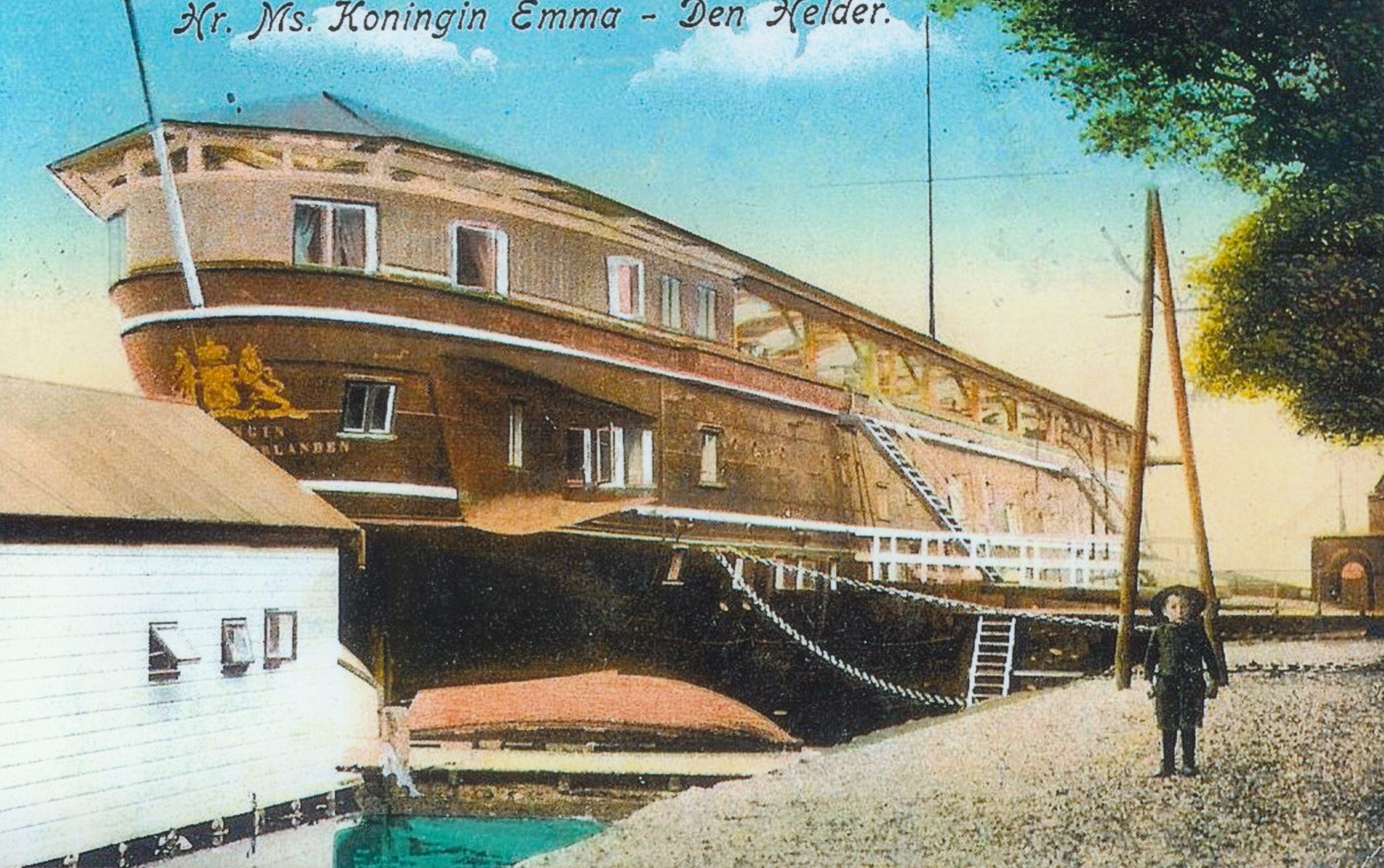As accommodation ship
In the period 1 October 1887-1 October 1888 was the Dutch screw steamship 1st class Zr. Ms. Koningin Emma der Nederland (1) captain J.H. Commijs stationed at Curacao, Dutch West Indies. During this period were several islands in the Caribbean and further more Columbia visited.
On 21 January 1888 arrived she at Savanilla, Columbia. In his report dated described her commanding officer the harbour and the political situation in Columbia. The bay of Savinilla silted rapidly and the stores from the steamships were overloaded into large iron prows towed by tugs towards the station Salgar. Despite their swallow draught was even for these small vessels difficult to get to the wooden jetties. From there were the stores loaded on the train towards Barranquilla. This railway line was very important while transporting around 2.000 tons weekly. Almost all stores transported over the Magdalena river were via this railway line towards Savanilla transported. In the past belonged the railway line for the government but was in the meantime sold to Francisco Kisneros of Cuba. The officers of the Dutch warship were allowed to travel free by train as appreciation for the support in 1885 by the Dutch Zr. Ms. Atjeh for salvaging prows smashed on the sandbanks during heavy weather. The railway line was now constructing a jetty with a length of 600 feet stretching into the sea to a depth of 30 feet and transversely a part with a lent of 500 feet to be used for the boats. The intention was to sue this new harbour since April 1888. The mouths of the Magdalena river were very difficult to use caused by continuously changing of the depth and far from reliable surveying. In February 1888 was a canal of 15 feet available. On the Magdalena-river were sternwheelers used similar to the ones in the USA. The largest had a displacement of 120 tons with a draught of 4 feet. The smaller ones had a draught of 2-3 feet and could go upwards the river over a distance of almost 600 miles. Shipping on this river was quite often a risky business and the company had a compensation for this purpose of 30.000 dollars. Totally were 20 steamboats active.
Early in the morning of the 26th was the harbour departed underway towards Cartagena, Columbia.
Note
1. also called frigate, call sign GQMF, on stocks as De Ruyter at the naval yard at Amsterdam, Netherlands on 6 November 1876, completed for the half on 31 October 1876, renamed Koningin Emma der Nederlanden on 7 January 1879, launched on 20 January 1879, commissioned on 1 December 1881, decommissioned on 22 May 1896 for repairs, commissioned on 16 June 1897, decommissioned on23 June 1900, converted at the shipyard De Lastdrager at Den Helder, Netherlands into an accommodation ship in 1908, commissioned on 16 November 1908, guard ship at Willemsoord, Netherlands in 1920, captured by the German forces at Willemsoord on 14 May 1940, capsized and sunk at Den Helder in 1942, salvaged in April 1943 and scuttled north of Fort Harssens, displacement 3.160 ton and as dimensions 80,00-91,85 x 12,50 x 6,10 metres, horsepower 2.732hp/450 nhp, speed 14,10 miles, one double bladed screw with a diameter of 4,88 metres, sail area 1.585 square metres, coal bunker capacity 325 ton for 5ive days full speed, iron built wood planked although the hull above the waterline and some other parts were made of steel to be able to increase the ammunition and coalbunker capacity, her crew numbered 200 men and the armament consisted of 6-17cm guns and 4-12cm guns. The engines and boilers were manufactured by the Koninklijke Fabriek van Stoom- en andere werktuigen at Amsterdam, Netherlands.
Source
Jaarboek van de Koninklijke Nederlandsche Zeemacht 1887-1888.

